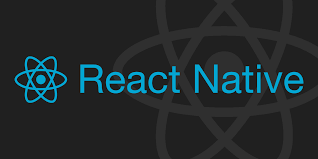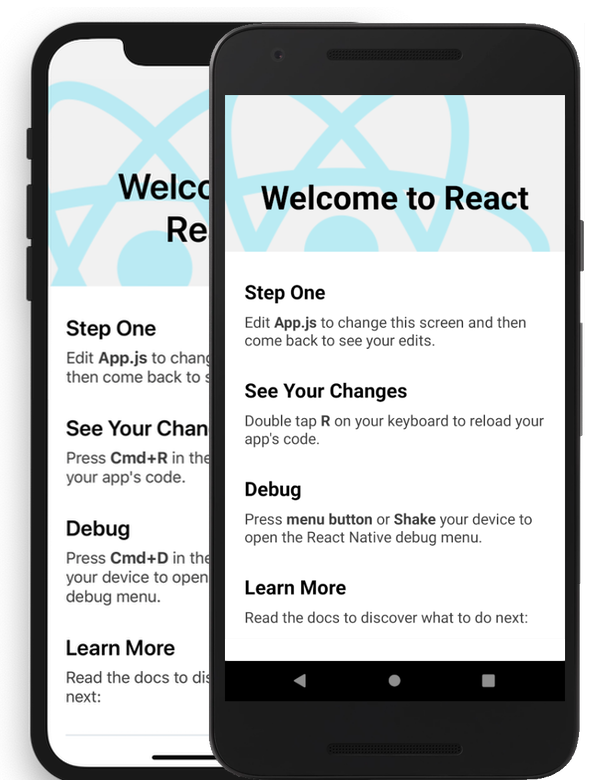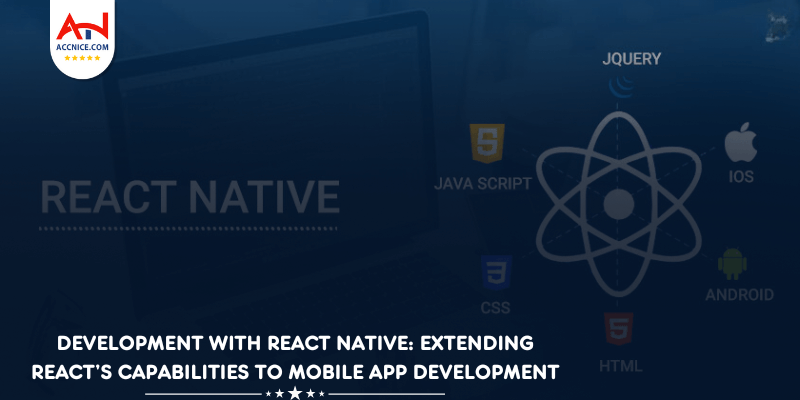Development with React Native: Extending React’s Capabilities to Mobile App Development
React Native, an extension of React, has revolutionized mobile app development by allowing developers to use the same code base for both iOS and Android platforms. This powerful framework extends React's capabilities, helping to build high-performance mobile apps using the declarative UI model of JavaScript and React. This article by Accnice explores how React Native leverages React's strengths to enhance mobile app development, providing insights into its features, advantages, and best practices.
Introduction to React Native

Overview of React Native
React Native is a revolutionary framework that extends the capabilities of React, allowing developers to create high-performance mobile apps for both iOS and Android platforms using a single codebase. Developed and maintained by Facebook, it leverages the popular React library, marrying the power of JavaScript with native platform capabilities.
a, Key Features of React Native
- Cross-Platform Development: Write once and deploy on both iOS and Android without significant platform-specific adjustments. This reduces development time and costs while maintaining a consistent user experience across devices.
- JavaScript and React Ecosystem: Developers can use React Native to create mobile apps using JavaScript, a widely known and used programming language. This integrates seamlessly with the rich ecosystem of React, including its tools and libraries.
- Native Performance: Unlike other JavaScript-based mobile development frameworks that render using webviews, React Native allows components to be rendered to native platform UI, ensuring that apps perform just like any other native app on the device.
- Live and Hot Reloading: React Native supports live reloading which automatically reloads or refreshes the application when new code changes are made. Hot reloading only reloads the file that was changed without losing the state of the app, which enhances the development process.
- Community and Ecosystem: With support from Facebook and a robust community of developers, React Native benefits from a wealth of libraries, tools, and frameworks that continue to grow and evolve, making it an ever more powerful option for mobile development.
b, Use Cases for React Native
- Single-Page Applications (SPAs): Mobile versions of SPAs can be developed with React Native, providing a smooth, native-like user experience with the benefits of web technology.
- Prototyping: Startups and developers looking to quickly prototype and test mobile app ideas can benefit from the speed and efficiency of React Native.
- Enterprise Solutions: Large-scale applications that require consistent branding and functionality across various platforms can leverage React Native for streamlined development and maintenance.
React Native stands out as a flexible and efficient solution for mobile app development, combining the simplicity of JavaScript with the performance of native applications. It allows developers to produce apps that are indistinguishable from native apps built using Objective-C, Swift, or Java. As technology progresses, React Native is poised to become an even more vital tool in the mobile developer's toolkit, encouraging a more unified and cohesive approach to app development across platforms.
Core Features of React Native

1, Live and Hot Reloading
Instant Feedback: React Native enhances developer productivity with its live reloading feature, which reloads the app automatically when files are changed. Additionally, hot reloading reloads only the changed components without losing the app state, which allows for faster adjustments and iterations during development.
2, Native Performance
Seamless Integration with Mobile Platforms: Unlike frameworks that use web technologies for UI elements, React Native uses real native components under the hood, leading to better performance and smoother animations that are indistinguishable from native apps developed with Java or Swift.
3, JavaScript and Native Code Interoperability
Flexibility in Development: React Native provides the unique advantage of integrating well with both JavaScript and native code. This means developers can optimize certain complex aspects of the app using native code while still maintaining the majority of the app in JavaScript, offering a balance between productivity and performance.
4, Extensive Library Support
Robust Ecosystem: React Native is supported by a rich ecosystem that includes a wide range of libraries and tools, enhancing its functionality. From navigation to state management libraries like Redux or MobX, developers have access to a comprehensive set of resources that can be integrated to extend the capabilities of their apps.
5, Developer Experience
Streamlined Processes: The framework is designed to offer an optimal developer experience, from easy project initialization with the React Native CLI to debugging tools and integration with popular IDEs. This makes it accessible not only to experienced developers but also to newcomers in the field.
React Native's core features make it an excellent choice for developers looking to create high-quality, performant mobile applications that offer a native look and feel. Its cross-platform capabilities, combined with the power of a component-based architecture and extensive library support, provide a comprehensive environment for building both simple and complex mobile apps efficiently. Whether for a small startup or a large enterprise, React Native presents a compelling framework that aligns with modern mobile development needs.
Advantages of Using React Native

a, Development Efficiency
- Code Reusability: One of the biggest advantages of React Native is the ability to reuse code across iOS and Android platforms, reducing development time and effort significantly. This not only streamlines the development process but also maintains consistency across different operating systems.
- Faster Time to Market: The shared codebase facilitates a quicker launch time for apps, as developers can build a single app that works seamlessly on both major mobile platforms, instead of developing multiple versions.
b, Cost-Effectiveness
- Reduced Development Costs: By using the same code for multiple platforms, businesses can save on development costs. This is particularly beneficial for startups and small companies with limited budgets.
- Simplified Maintenance: With a single codebase, maintaining and updating the app becomes easier and more cost-effective. Updates can be synchronized across all platforms, reducing the complexity and cost associated with maintaining multiple codebases.
c, Flexible User Interface Design
- High-Quality User Interfaces: React Native allows for the creation of smooth and responsive user interfaces using declarative components. This ensures a high-quality user experience that rivals native apps.
- Customizable UI: The component-based structure of React Native makes it easy to update and tweak interfaces without affecting the underlying functionality, giving developers more control over the app's appearance and feel.
d, Integration Capabilities
- Third-Party Plugins: React Native supports third-party plugins, meaning developers can easily integrate other native and JavaScript libraries to add rich features to the apps without compromising on performance.
- Native Functionality: For performance-critical components, React Native allows developers to write some parts of the app using native code to ensure optimal performance, providing flexibility when needed.
e, Community Support
- Strong Community Support: React Native’s robust community provides excellent resources for new developers, including tutorials, tools, and third-party plugins, which facilitate learning and development.
- Regular Updates: The active community and Facebook’s backing ensure that React Native is continuously updated with the latest features and improvements, keeping it relevant and powerful.
React Native offers a compelling blend of performance, efficiency, and versatility, making it a popular choice among developers looking to build high-quality mobile applications quickly and affordably. Its ability to provide a near-native user experience, combined with the support of a vibrant ecosystem, ensures that React Native remains at the forefront of cross-platform mobile development technologies.
Building Mobile Apps with React Native

a, Developer Productivity
- Streamlined Workflow: The live and hot reloading features significantly enhance developer productivity. Changes made to the code are instantly reflected in the application without the need for a full rebuild, allowing for a faster and more iterative development process.
- Immediate Feedback: This instant feedback loop helps developers quickly experiment with different UI designs and functionalities, reducing the time spent on debugging and troubleshooting.
b, Enhanced User Experience
- Smooth Transitions and Updates: For end-users, the ability to integrate React Native components into existing apps means that updates can be made smoothly without disrupting the overall app experience. This helps maintain user engagement and satisfaction.
- Consistent Look and Feel: React Native enables developers to maintain a consistent look and feel across both the new and existing parts of the app, providing a seamless experience for users.
c, Cost and Time Efficiency
- Reduced Development Time: By integrating React Native into existing applications, companies can save significant development time and resources. They do not need to start from scratch but can instead enhance their apps incrementally.
- Cost-Effective Upgrades: This approach also means that businesses can extend the functionality of their apps without the significant cost of a full redevelopment, making it financially viable for smaller businesses and startups.
d, Flexibility and Scalability
- Incremental Adoption: Companies can choose to adopt React Native for parts of their application where it makes the most sense, such as for certain screens or features that benefit from a native feel.
- Scalable Upgrades: As business needs grow, more components can be developed or replaced using React Native, allowing the application to evolve organically and at a manageable pace.
The ability of React Native to blend seamlessly into existing mobile applications provides a unique advantage for businesses looking to enhance their apps without overhauling them completely. The live and hot reloading features further augment this by making the development process more dynamic and responsive. For developers and businesses alike, React Native not only offers a way to build new apps efficiently but also a path to modernizing current applications in a cost-effective manner.
Best Practices for React Native Development
a, Component Reusability
- Maximize Component Usage: Design UI components to be reusable across different parts of your application. This not only reduces duplication but also simplifies updates and maintenance.
- Consistent Component Library: Develop a component library that can be shared across projects. This speeds up development for new features and ensures consistency in the user interface.
b, State Management
- Choose Appropriate Tools: Select the right state management tools (such as Redux, MobX, or Context API) based on your project's complexity. Proper state management ensures easier data handling and component interaction, especially in large-scale applications.
- Centralize State Management: Centralizing the application state can help manage data flow more effectively and make it easier to trace and debug.
c, Testing and Quality Assurance
- Comprehensive Testing Strategy: Implement a robust testing strategy that includes unit tests, integration tests, and end-to-end tests. Tools like Jest for unit testing and Detox for end-to-end testing can help ensure your application is robust and bug-free.
- Continuous Integration (CI) and Continuous Deployment (CD): Set up CI/CD pipelines to automate testing and deployment processes. This not only helps in identifying issues early but also in speeding up the release cycles.
d, User Interface and User Experience
- Responsive Design: Ensure your app looks great on all devices by using responsive design principles. React Native’s Flexbox layout provides powerful options to design a flexible and responsive UI.
- Accessibility: Make accessibility a priority by using React Native’s built-in Accessibility API to make your app usable by as many people as possible.
e, Documentation and Collaboration
- Maintain Good Documentation: Keep your project documentation up to date. This includes code comments, API documentation, and development guides, which are crucial for new team members and for maintaining the app long-term.
- Effective Collaboration: Use version control systems like Git effectively, and maintain good communication with team members through tools like Slack or Microsoft Teams. This ensures that team members are aligned and can collaborate efficiently.
Following these best practices in React Native development not only optimizes the performance but also enhances the scalability and maintainability of the applications. With a focus on reusability, performance optimization, thorough testing, and effective collaboration, React Native developers can build high-quality mobile applications that provide excellent user experiences.
Challenges in React Native Development
a, Performance Optimization
- JavaScript Thread Limitations: The reliance on the JavaScript thread can lead to performance bottlenecks, especially with complex animations or when processing large amounts of data.
- Optimizing Performance: Implementing strategies such as reducing the number of bridge communications, optimizing state updates, and using lightweight components can help mitigate performance issues.
b, Third-Party Dependency Management
- Dependency Overheads: Relying heavily on third-party libraries can introduce compatibility issues, especially when these libraries are not regularly updated.
- Selective Integration: Carefully choose and manage third-party libraries to ensure they are reliable, well-maintained, and compatible with the latest versions of React Native.
c, Upgrade and Maintenance
- Upgrading Challenges: Regular updates of React Native can sometimes lead to breaking changes, requiring developers to spend significant time adjusting their projects to new versions.
- Strategic Upgrades: Plan and execute upgrades carefully, ensuring that there's sufficient testing to handle any breaking changes without affecting the app's functionality.
d, Development Environment and Tooling
- Tooling Variability: The development environment in React Native can be inconsistent across different systems, leading to difficulties in setting up a uniform development environment.
- Enhancing Development Tooling: Utilize the best tools available for React Native development, like Expo for simplified setup and debugging tools such as Reactotron, to enhance development efficiency and consistency.
e, Learning Curve and Resource Availability
- Complex Learning Curve: Developers new to React or mobile development might find the React Native architecture and ecosystem challenging to navigate.
- Comprehensive Learning Resources: Foster a learning environment with access to comprehensive resources, tutorials, and community support to ease the learning curve for new developers.
Conclusion
Despite its powerful capabilities and benefits, React Native development comes with its set of challenges. Addressing issues related to performance, UI consistency, third-party dependencies, and maintaining an effective development environment are crucial for successful app development. With careful management, ongoing education, and strategic use of resources, developers can leverage React Native to build top-notch mobile applications while navigating and overcoming these challenges effectively. As the landscape of mobile development evolves, staying adaptable and informed about the best practices and pitfalls of React Native will be key to leveraging its full potential.
For more insights and updates on effective social media strategies, make sure to follow Accnice and our tutorial blog, where we share the latest and most effective content marketing tips.
Thank You For Following Accnice.com
Buy Facebook, TikTok, Twitter, Instagram, Google advertising accounts and Genuine License Keys at the best prices at Accnice.com

























